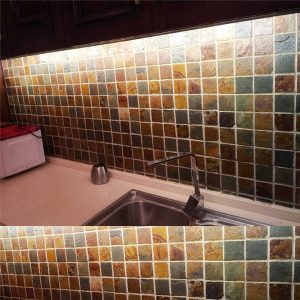Introduction
In the realm of modern architecture and design, the use of urban cultured stone has emerged as a versatile and sustainable alternative to traditional building materials. With its ability to mimic the look and feel of natural stone while offering enhanced durability and eco-friendliness, urban cultured stone has gained popularity among architects, builders, and homeowners alike. This article explores the various aspects of urban cultured stone, including its composition, manufacturing process, applications in architecture, environmental benefits, and future trends.
Composition of Urban Cultured Stone
Urban cultured stone, also known as manufactured stone or artificial stone, is a composite material designed to replicate the appearance of natural stone. It is composed of a mixture of cement, aggregates, and iron oxide pigments, which are molded and colored to resemble different types of stone such as limestone, granite, slate, and travertine. The composition of urban cultured stone can vary depending on the manufacturer and desired aesthetic, but the basic ingredients remain consistent across different products.
The manufacturing process of urban cultured stone involves mixing the raw materials together to form a slurry, which is then poured into molds to create individual stone units. The molds are typically designed to mimic the texture and shape of natural stone, resulting in a realistic and authentic appearance. Once the stone units are cast and cured, they are removed from the molds, trimmed, and finished to achieve the desired color and texture.
Applications in Architecture
Urban cultured stone offers a wide range of applications in architecture and design, thanks to its versatility, durability, and aesthetic appeal. One of the most common uses of urban cultured stone is in exterior cladding, where it is used to cover the façades of buildings and structures to create a visually striking and textured finish. Urban cultured stone can be installed in a variety of patterns and configurations, allowing architects and designers to achieve a customized look that complements the overall design of a building.

In addition to exterior cladding, urban cultured stone is also used for interior applications such as accent walls, fireplace surrounds, and feature panels. Its lightweight nature and ease of installation make it a popular choice for adding a touch of elegance and sophistication to interior spaces. Urban cultured stone can be combined with other materials such as wood, metal, and glass to create unique and contemporary design elements that enhance the overall aesthetic of a space.
Environmental Benefits
One of the key advantages of urban cultured stone is its eco-friendly nature, which makes it a sustainable choice for architects, builders, and homeowners. Unlike natural stone, which is quarried from the earth and requires significant energy and resources to extract, urban cultured stone is manufactured using recycled materials and minimal water consumption. This reduces the environmental impact of stone production and helps conserve natural resources for future generations.
Furthermore, urban cultured stone is a durable and long-lasting material that requires minimal maintenance over its lifespan. Unlike natural stone, which may require sealing, polishing, and repairs to maintain its appearance, urban cultured stone is resistant to fading, chipping, and staining, making it a cost-effective and sustainable choice for architectural applications. By choosing urban cultured stone over natural stone, architects and designers can reduce the carbon footprint of their projects and contribute to a more sustainable built environment.
Future Trends
As the demand for sustainable building materials continues to grow, urban cultured stone is poised to become an increasingly popular choice for architects and designers seeking to balance aesthetics with environmental responsibility. Manufacturers are constantly innovating and developing new technologies to improve the performance and appearance of urban cultured stone, offering a wider range of colors, textures, and finishes to suit diverse design preferences.
In Choosing the right stone veneer color coming years, we can expect to see a greater emphasis on the integration of urban cultured stone with other sustainable materials such as recycled glass, bamboo, and reclaimed wood to create innovative and eco-friendly architectural solutions. Additionally, advancements in digital fabrication and 3D printing technology are likely to revolutionize the production process of urban cultured stone, allowing for more intricate and customizable designs that push the boundaries of traditional stone masonry.
Conclusion
Urban cultured stone represents a harmonious blend of aesthetics and sustainability in modern architecture, offering architects, builders, and homeowners a versatile and eco-friendly alternative to natural stone. With its ability to mimic the look and feel of natural stone while providing enhanced durability and low maintenance requirements, urban cultured stone has become a popular choice for a wide range of architectural applications. As the industry continues to evolve and embrace sustainable practices, urban cultured stone is poised to play a key role in shaping the future of urban design and construction.
